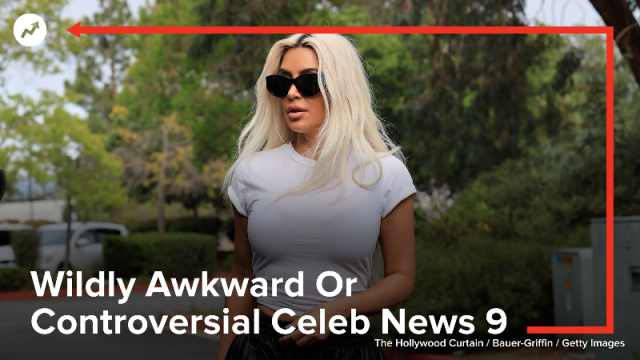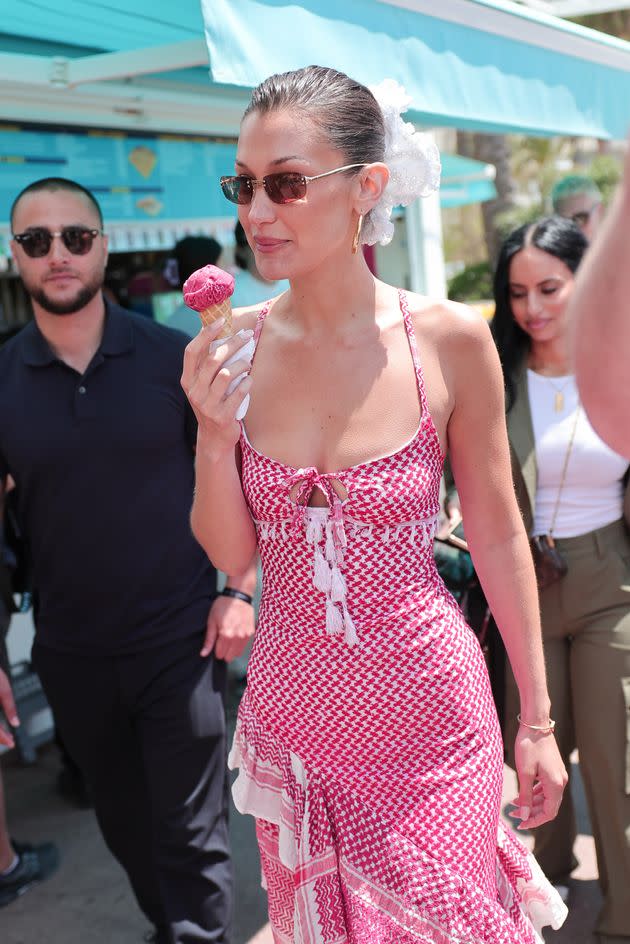Bella Hadid Stands With Palestine In Striking Keffiyeh Dress At Cannes

Model Bella Hadid made a political fashion statement at the Cannes Film Festival this week, donning a dress reminiscent of the headscarves known worldwide as a symbol of solidarity with Palestine.
On Thursday, Hadid stepped out wearing a vintage red-and-white dress featuring the striking checkered pattern and fringe of a keffiyeh scarf, a nod to her Palestinian heritage. (Though the asymmetrical, ruffled spaghetti-strap dress does look a bit more like a shemagh, the keffiyeh’s more complex cousin.)
Photographed fetching ice cream during a walk along the French Riviera, the model and fragrance designer rounded out her ensemble with red Gucci mules, gold hoop earrings and rimless, rectangular sunglasses.
She styled her hair in a slick ponytail accented with a wispy, white hair tie and went with a glowing, makeup-minimal look on her skin.
The star, whose support for Palestinian liberation predates the current conflict with Israel, acknowledged the meaning behind her outfit while giving fashion designers Michael Sears and Hushi Mortezaie, of the label Michael and Hushi, a shoutout online later that day.

Reposting an image of the original 2001 design to her Instagram Story, she tagged the designers and wrote, “Free Palestine forever,” beside an emoji of the Palestinian flag.
Since Israel’s offensive in Gaza, which has killed some 34,000 people, began, Hadid has repeatedly spoken in support of Palestinians in Gaza.
Last October, in the wake of the Oct. 7 Hamas attack that killed 1,200 Israelis and kicked off the latest violence, the model expressed her sympathy for Palestinian and Israeli victims of violence.
“I believe deep in my heart that no child, no people anywhere, should be taken away from their family either temporarily or indefinitely. That goes for Israeli or Palestinian people alike,” she wrote on Instagram.
Hadid’s father, real estate developer Mohamed Hadid, was born in Nazareth during the Arab-Israeli War of 1948. He has described how his family was forced to flee from their home when he was a baby, taking refuge in Syria before immigrating to the United States in his teens.